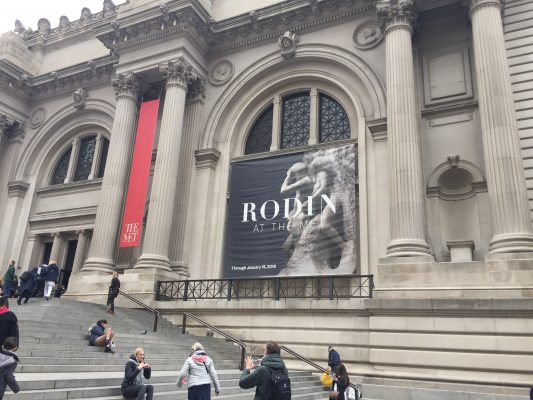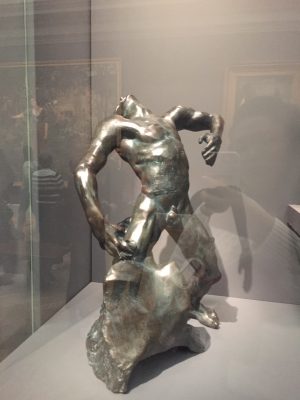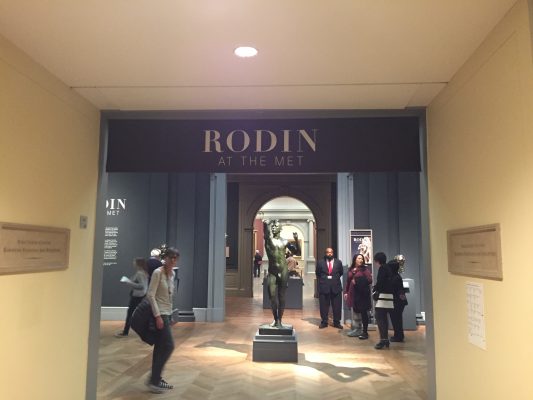Rodin Returns to The MET
November 28, 2017
From now until January 15, The Metropolitan Museum of Art (MET) is hosting a spectacular exhibit featuring the works of and inspired by the artist Auguste Rodin (1840-1917) in honor of the 100th anniversary of his death. The exhibit not only features art by Rodin himself, but also by many of his contemporaries and those who knew him and were inspired by his work like Claude Monet, Franz Von Stuck, and Robert MacCameron. “Rodin at The Met” is a chance to view dozens of masterpieces that have not been on public display in decades and to experience the works of a truly celebrated artist.
This once-in-a-New Yorker’s-lifetime exhibit is included in the museum admittance fee with no extra cost. The Met suggests a $12 donation for students, but operates on a “pay-as-you-wish” basis so going to visit Rodin’s work on display is a great low-cost activity for art-lovers.
“Rodin at The Met” is displayed on the second floor of The Met Fifth Avenue in the newly redone B. Gerald Cantor Sculpture Gallery (Gallery 800) on the second floor. The MET states that there is no designated point within the exhibit to start viewing the art, but a great place to start is at the exhibition overview on the wall of the left hand side of central entrance and working counterclockwise around the gallery, ending with Rodin’s “Fallen Caryatid Carrying an Urn” (1883).

The art on display splits the long, brightly lit room into two sides, heaven and hell. The left hand side of the gallery is flanked by massive iron sculptures “Adam” and “Eve”, modeled in 1881 and cast in 1910, leading to other pieces portraying human sorrow and agony. A must-see of “hell” are works from Rodin’s lifelong project, “The Gates of Hell,” commissioned in 1880, a series of 180 figures writhing in agony originally created to be the doorway of Parisian art museum that was never built. The focal point of “The Gates of Hell,” Rodin’s famous statue, “The Thinker,” modeled in 1880 and cast in 1910, is displayed in the center of the exhibit. Franz von Stuck’s, 1863–1928, painting “Inferno” shares the exhibit space for sharing Rodin’s inspiration for creating the tormented and contorted figures of “The Gates of Hell.” However, there is beauty in hell: Rodin truly brings stone to life with “The Tempest,” carved before 1910, a shrieking woman trying to escape from her white marble prison.

The both morally and spatially right side of the gallery is where Rodin displays his heaven. In complete contrast with “The Gates of Hell” is Rodin’s ensemble collection of his “Muses.” Displayed here are Rodin’s many sculptures of women and mythological depictions, like “Iris, Messenger of the Gods,” modeled 1890 and cast in 1965. Pieces that especially stand out in heaven are Rodin’s sculptures made from white marble. “Heaven” also holds complementary works from Claude Monet, 1840–1926.
“Rodin at The MET” has a great variety of his works made from all kinds of mediums from paintings to sculptures made from marble, iron, bronze, terracotta and plaster throughout the entire exhibit. After experiencing the agony and ecstasy of Auguste Rodin’s work, pop over to the galleries directly adjacent to the exhibit to see more paintings from Claude Monet and Vincent Van Gogh. From art connoisseurs to new museum-goers, everyone will find something to experience in the new “Rodin at The Met” exhibit.











